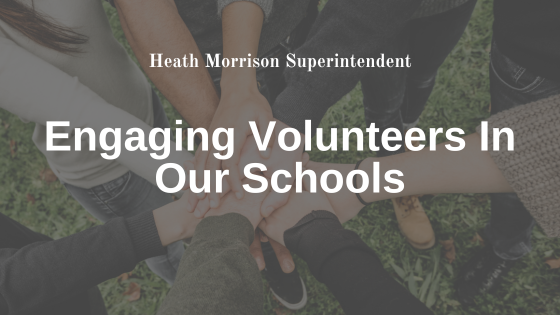Each spring, as educators gear up for the home stretch of the school year, it’s a great idea to recognize the parent volunteers who have contributed in big and small ways in our schools. Exhibiting an attitude of gratitude for teachers and staff members is always a best practice for school leaders, and there’s also tremendous value in recognizing the contributions of volunteers – the unsung heroes who make a difference in the educational experience of our students.
Research indicates that strong volunteer programs in schools positively impact student achievement and behavior. Schools that work well with families tend to have better teacher morale. School leaders are fortunate when they take on a role where a robust parental involvement program is already in place. When this is not the case, leaders should dedicate time to creating a well-planned, inclusive, comprehensive program, with thoughtful consideration in these areas:
Safety first – Volunteers who work directly with campuses and students should complete a authorize a criminal history background check. These forms should be easily obtainable via the school district website and volunteers notified as soon as they are cleared to start helping on campus.
Have a plan – Volunteers need to feel comfortable and welcomed into the school, with plenty of things to do. One of the things that can discourage parent volunteers is arriving at school to discover they aren’t needed or aren’t sure what to do. Teachers report that they want to utilize parent volunteers but have trouble finding time to prepare activities for volunteers to help with. School leaders can make it easier on both parties by supporting a volunteer program built around weekly sessions for parents to help during specific times. Recruiting a volunteer coordinator who can help assign roles, answer questions and write procedures for frequently repeated volunteer roles is a great first step.
Communicate with Technology – Busy parents are more likely to respond to a request to help when it comes digitally. Consider using electronic communication channels like email, text messages and social media to reach more parents and get them excited about helping in schools. Using an online signup tool is helpful to let parents schedule themselves for shifts and receive automated reminders.
Make Space for Working Parents – School leaders should support a program that fully engages parents in the classroom community, even those that are not able to commit to being in the classroom during school hours. This might include scheduling volunteer shifts at the start of the day so parent can help before work, preparing materials to be completed from home, and asking for help with school events held outside regular school hours.
Don’t Forget Older Students – Classrooms in secondary schools are often overlooked by volunteer programs, but parents can make an especially meaningful contributions by sharing about their employment and professional background. Schools might consider hosting a “Career Day” where parents are invited to talk to students about their jobs. They might focus on the basic nature of their profession, special skills required, professional training requirements, and tips for achieving success. It is especially valuable for secondary students to have an opportunity to make professional connections and learn about careers that interest them. Secondary students could also be utilized as volunteers in primary schools, in tutoring, coaching and mentor roles. This is win-win opportunity for students in primary classrooms and older students who reap the benefits of volunteerism while earning community service hours required by many extra-curricular organizations.
Show Appreciation – Thanking volunteers for their service is an excellent way to grow your volunteer pool and keep them returning to help in schools. Let parents know that you and your students value their contributions, no matter how small or how involved. Remember that volunteers are freely choosing to invest their time helping in classrooms. It’s a great idea to recognize them for their selflessness and for modeling for students a great example of service.
Volunteers bring fresh energy and renewed enthusiasm to the classroom environment. They help teachers give more time and attention to individual students and strengthen the school/parent partnership. Cultivating a supportive, well-organized volunteer program pays long-term dividends for school leaders, school staff, parents and students alike.

